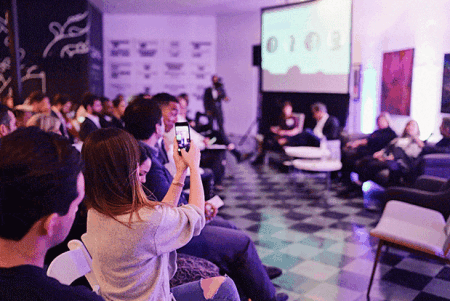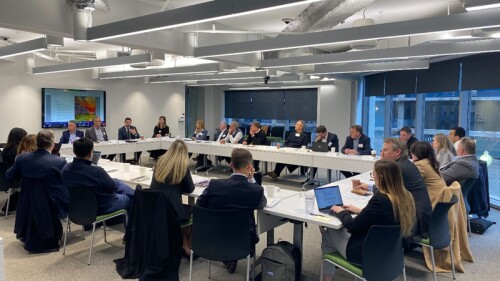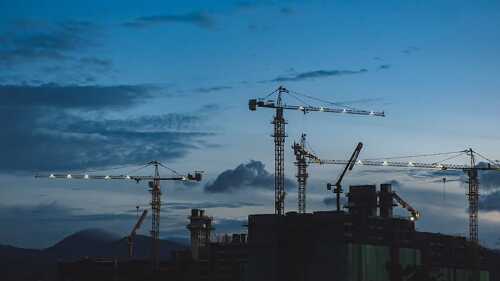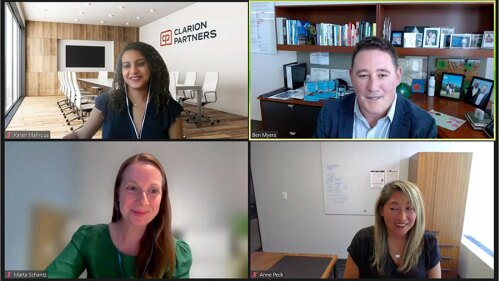The notion that an active cultural milieu can have a broad-ranging economic impact is certainly not a novel concept for most real estate developers. But Miami’s rapid and sustained growth due to its significant investment in cultural development is perhaps one of the more successful case studies on the concept.
In February, ULI Southeast Florida/Caribbean gathered a panel of researchers, real estate developers, and economic development agencies at the new Arts & Entertainment District—the latest neighborhood to emerge as a cultural destination for city residents—to address these persistent challenges and offer some solutions for driving more inclusive development by attracting a creative class.
“When I first moved to Miami, there was no arts community,” said Alyce Robertson, the executive director of the Miami Downtown Development Authority, an agency tasked with revitalizing the city’s downtrodden urban center. “A group of very talented people had a vision, and they established a council to build up the arts in Miami. Fast-forward and now there are hubs and major institutions.”
There is no question that Miami’s cultural activity—bolstered by the arrival of Art Basel Miami Beach nearly 15 years ago—has made a substantial economic impact on the city. However, this growth is both lauded and perceived as a contributor to one of Miami’s most critical housing problems: affordability.
According to a recent survey spearheaded by Americans for the Arts, a national organization that supports the efforts of the Arts & Business Council of Miami (among others), Miami ranks high on the list of cities whose cultural development agencies have made a huge economic impact. “We are one of the top three counties for economic impact in the local community,” says Laura Bruney, the organization’s president and CEO. “The arts have driven a $1.4 billion impact in Miami, with over 14,000 full-time arts and culture jobs and nearly 16 million people a year reporting that they’ve attended a cultural event.”
NR Investments principal Nir Shoshani notes that this far-reaching cultural impact drove his vision for the Arts & Entertainment District, a 20-block development nestled between downtown Miami and the vibrant Wynwood arts neighborhood.
“When we stepped into the district in 2012, we wanted to create an urban village concept that had good density, mixed-use, and transit opportunities,” he says. Currently, the A&E District, as it is dubbed by the developer, is anchored by two condominium and multifamily properties—Parc Lofts and Filling Station Lofts—with construction of its 37-story luxury Canvas condominium tower underway.
Early on, NR Investments developed cultural programming to entice a young creative class to the neighborhood, including activities like Movies Under the Stars and the Miami Flea, a monthly event that highlights local makers and culinary shops.
NR’s initiative has created plenty of buzz around the A&E District, but Creative Class Group founder and author Richard Florida notes that building and sustaining a creative-class economy remains a significant challenge for local stakeholders. The Miami Urban Future Initiative—a policy group backed by the Knight Foundation, Florida International University, and the Creative Class Group—will lead new research and mapping on economic, occupational, creative, and technological assets in Miami.
“Arts neighborhoods tend to build more engaged neighborhoods. They do so precisely because they are diverse,” says Florida. “Miami has now reached a point where it’s a global city, but one of its weaknesses is its ability to attract a creative class.”
In identifying obstacles to drawing a creative class of residents, affordability remains a top concern for Bravo and Florida. They note that creative workers—faced with lackluster opportunity and wages as compared with other major U.S. cities—often do not consider Miami as a permanent home. Bravo notes that this is precisely the issue that local officials must address since urban Miami’s real estate renaissance was driven by young, creative residents.
“Young people moved in because there were all these vacant units, and it was cheap,” says Bravo, “and then our business and cultural institutions and restaurants started following them. After the second boom, we lost that affordability, and we need to find a way to retain that demographic.”
Shoshani thinks that the solution isn’t exactly an easy one, and puts the onus on county officials to come up with workable solutions for developers and residents alike. “Building affordable housing doesn’t cover the cost of construction or land in an urban quarter. I think it’s a county question that needs a lot of thought on how to solve,” he says.
“There’s an incredible opportunity to build inclusive housing in a way that’s organized and effective, rather than pushing a local developer to do it alone,” adds Florida. “Inclusionary zoning is coming because there’s no other mechanism to get affordable housing built. The local government is going to trade tax incentives and density to add more supply, and we’re going to have to subsidize affordable.”
Ultimately, Miami’s emergence as a global arts city has boosted the city’s real estate growth and appeal to young urban workers. But if city leaders and developers intend to drive neighborhood revitalization through arts and culture, they will have to consider solutions for building a more sustainable model.
“The developers and retailers and the community itself need to come up with a pricing concept that will be sustainable. I believe that finances are important, but they can’t be the only variable when you put together a community,” says Shoshani. “You have to be okay with making less money.”







